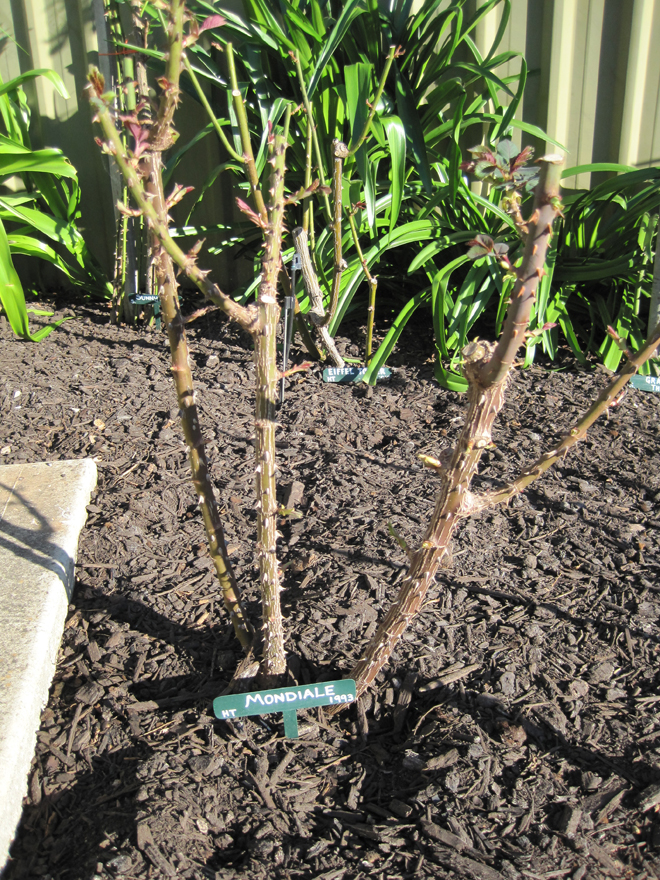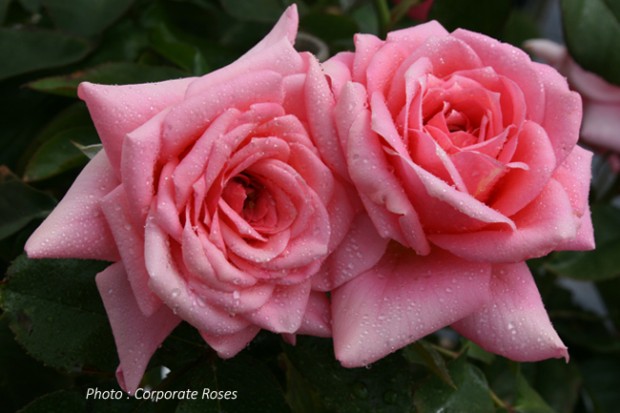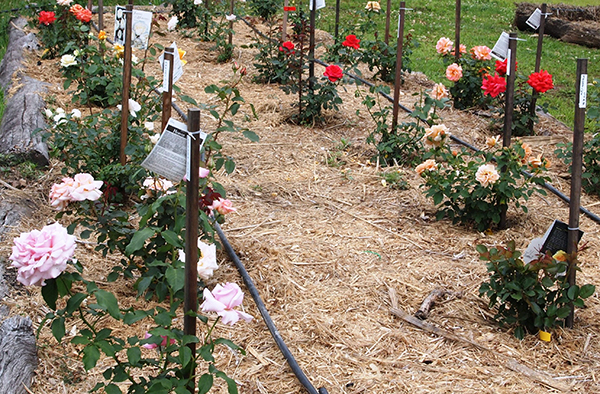Discover the Beauty of the Rose Society of South Australia: A Guide to Growing and Caring for Roses

Roses have long captivated hearts and gardens alike with their stunning beauty and enchanting fragrances. In South Australia, the Rose Society stands as a beacon for enthusiasts, offering invaluable resources for both novice and seasoned gardeners. This guide explores the essential tips and techniques for growing and caring for roses, ensuring they thrive in the unique climate of the region. From selecting the right varieties to understanding pruning methods, readers will discover a wealth of information to create their own rose-filled paradise. Join us on this journey to celebrate the art of rose gardening and immerse yourself in the vibrant world of blooms.
Exploring the Rose Society of South Australia
The Rose Society of South Australia (RSSA) is a dedicated organization that promotes the appreciation and cultivation of roses within the region. Established in 1947, it serves as a platform for rose enthusiasts, offering resources, education, and support to both hobbyists and professional growers. The society organizes various events throughout the year, including rose shows, workshops, and garden tours, aimed at fostering a community around this beloved flower. Through a combination of expert advice and shared passion, the RSSA plays a crucial role in enhancing the local gardening culture and preserving the rich history of rose cultivation in South Australia.
History of the Rose Society of South Australia
The Rose Society of South Australia was founded in 1947 by a group of passionate horticulturists who aimed to create a community focused on roses. Over the decades, the society has evolved to include thousands of members, facilitating the exchange of knowledge about rose breeding, care, and display. Initially, the society aimed at organizing rose shows to highlight local talent and rose varieties, establishing an annual tradition that still captures the interest of both participants and visitors.
Membership Benefits
Joining the Rose Society of South Australia offers numerous benefits for rose lovers. Members enjoy access to exclusive workshops and lectures from experienced horticulturists, opportunities to participate in local and national rose competitions, and the ability to connect with other enthusiasts. Additionally, members receive newsletters that provide updates on society activities, growing tips, and upcoming events, fostering a strong sense of community among rose aficionados.
Events and Activities
The society conducts various events and activities throughout the year to engage its members and the public. Key highlights include the annual Rose Show, where various rose specimens are displayed and judged, and educational workshops covering topics like pruning, pest management, and rose breeding techniques. Seasonal garden tours allow members to explore local private rose gardens, sharing insights and fostering camaraderie among rose enthusiasts.
Conservation and Education
With a strong emphasis on conservation, the Rose Society of South Australia actively promotes sustainable gardening practices. The society educates its members about the importance of biodiversity and preserving heirloom rose varieties while encouraging the adoption of eco-friendly gardening techniques. Through workshops and information sessions, it aims to raise awareness about the challenges posed by climate change and pests, equipping gardeners with the knowledge they need to thrive.
Upcoming Projects
The Rose Society of South Australia is always looking to innovate and engage its members with new projects. Upcoming initiatives include a focus on establishing community gardens that feature rose collections, promoting public interest in horticulture, and various outreach programs aimed at schools to educate younger generations about the joy and benefits of growing roses. These projects aim to enhance public understanding of horticulture while also creating beautiful spaces for community enjoyment.
| Event | Date | Description |
|---|---|---|
| Annual Rose Show | October 15-16 | A showcase of rose varieties with expert judging and public displays. |
| Pruning Workshop | July 10 | An educational session focused on proper rose pruning techniques. |
| Garden Tours | Various Dates | Visits to local gardens featuring impressive rose collections. |
When to transplant roses in South Australia?

To transplant roses in South Australia, the best time is during the cooler months, specifically in late autumn or early spring. This timing allows the plants to establish their root systems before the intense heat of summer or the cold of winter.
Optimal Seasons for Transplanting Roses
Transplanting roses during the optimal season is crucial for their survival and growth. In South Australia, the ideal times are:
- Late Autumn: Transplanting after the first frost encourages dormancy.
- Early Spring: This allows roses to start growing as temperatures rise.
- Avoid Summer: Heat stress can lead to transplant shock.
Signs That Roses Need Transplanting
Before moving roses, it's essential to identify whether they actually need transplanting. Indicators include:
- Root Bound: If roots grow out of the pot or are tightly circling.
- Stunted Growth: A lack of new growth in the past seasons.
- Soil Degradation: Poor soil quality or drainage issues.
Preparation for Transplanting Roses
Proper preparation can significantly improve the chances of successful transplantation. Here’s what you should do:
- Water Well: Ensure the rose is well-hydrated before digging.
- Choose the Right Location: Select a spot with good sunlight and drainage.
- Prepare the New Soil: Enhance it with compost and organic matter.
Transplanting Process for Roses
The transplantation process itself requires careful steps to avoid damaging the plant. Follow these steps:
See also:
- Digging: Carefully dig around the root ball, maintaining a good portion of soil.
- Replanting: Place the rose in the new hole, making sure it's level with the soil surface.
- Watering: Water the plant thoroughly after transplanting.
Post-Transplant Care for Roses
After transplanting, roses require specific care to ensure they thrive. Important care tips include:
- Mulching: Apply mulch to retain moisture and regulate temperature.
- Monitoring Water: Keep the soil consistently moist but not soggy.
- Fertilizing: Use a balanced fertilizer to promote robust growth.
What is the rose capital of Australia?

The rose capital of Australia is known to be Gisborne, a charming township located in Victoria. This title is attributed to Gisborne due to its favorable climate and soil conditions, which contribute to the successful cultivation of a wide variety of roses. The region hosts numerous rose gardens and events that celebrate these beautiful flowers, making it a popular destination for garden enthusiasts and visitors alike.
History of Rose Cultivation in Gisborne
The cultivation of roses in Gisborne has deep historical roots, dating back to the 19th century. Early settlers introduced many rose varieties, which flourished in the local soil conditions. The area's heritage gardens set the stage for further developments in rose cultivation, leading to the establishment of festivals that celebrate the flower's beauty and diversity.
- Introduction of rose varieties by early settlers.
- Development of heritage gardens showcasing different types of roses.
- Establishment of local garden clubs focused on rose cultivation.
Annual Rose Festivals
Gisborne hosts annual rose festivals that attract thousands of visitors each year. These festivals feature stunning displays of roses, competitions, and workshops aimed at both novice and expert gardeners. The events offer a wonderful opportunity for networking amongst garden enthusiasts and showcasing the region's rich horticultural culture.
- Stunning displays of various rose varieties.
- Competitions for the best amateur and professional gardens.
- Workshops and seminars led by experts in rose gardening.
Impact of Climate on Rose Growth
The Mediterranean climate of Gisborne significantly contributes to the successful growth of roses. The region enjoys warm summers and cool winters, which are ideal conditions for budding and blooming. Additionally, adequate rainfall and well-draining soil enhance the health and resilience of roses, making Gisborne a prime location for rose enthusiasts.
- Warm, sunny summers promote blooming.
- Cool winters aid in the dormancy period of roses.
- Well-draining soils reduce the risk of root rot.
Varieties of Roses Grown
Gisborne is home to an extensive array of rose varieties, thanks to its conducive growing conditions. From classic hybrid teas to fragrant bush roses and climbing roses, the diversity ensures that gardens remain vibrant throughout the growing season. Local nurseries often specialize in unique and rare rose breeds not commonly found elsewhere.
- Hybrid tea rosesknown for their long stems and large blooms.
- Bush roses which are popular for their compact growth and generous flowering.
- Climbing roses that adorn fences and trellises.
Importance of Roses to Local Economy
The presence of roses has a substantial impact on the local economy of Gisborne. Rose-related tourism, including visits to gardens and participation in festivals, generates income for the community. Local nurseries and florists also benefit from the demand for both cut flowers and potted roses, making this flower a significant contributor to the town’s economic stability.
- Increased tourism boosts local businesses during festival seasons.
- Local nurseries thrive due to demand for rose varieties.
- Florists benefit from the popularity of roses for special occasions.
What is the best mulch for roses in Australia?

The best mulch for roses in Australia depends on various factors such as climate, soil type, and the specific needs of the rose varieties being cultivated. However, several types of mulch have proven to be particularly beneficial for rose plants when grown in Australian conditions. These mulches help to retain soil moisture, suppress weeds, and improve soil quality.
Organic Mulch Options
Organic mulches are derived from natural materials, making them an excellent choice for roses in Australia. They not only provide protection but also improve soil fertility as they decompose.
- Bark Mulch: Available in various sizes, it retains moisture and adds aesthetics to rose beds.
- Compost: Enriches the soil with nutrients, ideal for feeding hungry roses.
- Straw: An inexpensive option that helps suppress weeds and adds organic matter as it breaks down.
Inorganic Mulch Options
Inorganic mulches provide a durable solution that requires little maintenance. They do not decompose and thus don’t add nutrients to the soil but are effective in moisture retention.
- Gravel: Great for drainage; it keeps the soil from becoming compacted while allowing for moisture retention.
- Pea Gravel: A finer option that can look aesthetically pleasing while serving the same moisture-retaining function.
- Rubber Mulch: Made from recycled tires, it lasts longer but doesn’t decompose or contribute nutrients.
Benefits of Mulching Roses
Mulching roses provides multiple benefits that are crucial for healthy plant development, especially in the varying Australian climate.
See also:
- Moisture Retention: Reduces evaporation, helping to maintain consistent soil moisture, which is vital for roses.
- Temperature Regulation: Insulates roots from extreme heat and cold, promoting healthy growth.
- Weed Suppression: Prevents weed growth, allowing roses to compete for nutrients and water more effectively.
Choosing the Right Mulch for Your Climate
Different regions in Australia have varying climates, and the selection of mulch should cater to local conditions to optimize rose performance.
- Tropical Regions: Organic mulches like straw or shredded leaves work well for moisture retention.
- Arid Areas: In regions with less rainfall, gravel or stone mulches help reflect heat while conserving moisture.
- Temperate Zones: A combination of organic mulches, such as bark chips and compost, supports diverse rose varieties.
Application Tips for Mulching Roses
Proper application of mulch is essential to gain the maximum benefits from it when cultivating roses. Here are some tips to keep in mind.
- Layer Thickness: Apply mulch in layers of about 5-10 cm to effectively suppress weeds and retain moisture.
- Avoid Plant Contact: Keep mulch a few centimeters away from the rose stems to prevent rot and ensure good airflow.
- Refresh Regularly: Organic mulches should be replenished annually to maintain nutrient levels as they decompose.
What is the national bird of South Australia?
The national bird of South Australia is the Australian state emblem, officially recognized as the Emu (Dromaius novaehollandiae). This large, flightless bird is endemic to Australia and is known for its distinctive long neck and legs, as well as its soft, brown plumage. The Emu serves as a symbol of the state, representing not only the unique wildlife found in Australia but also resilience and adaptability.
Historical Significance of the Emu
The Emu has played a crucial role in Aboriginal culture and history. It has been an important source of food and has spiritual significance in various indigenous communities.
- The Emu features in Aboriginal dreamtime stories, representing strength and endurance.
- Its feathers are traditionally used to create artistic artifacts and ceremonial objects.
- Emus were often hunted for their meat, providing a crucial source of nourishment.
Physical Characteristics of the Emu
The Emu is the second-largest bird in the world, after the ostrich. It stands about 1.5 to 2 meters tall and can weigh between 18 to 60 kilograms.
- The long neck allows the Emu to browse for food in trees and shrubs.
- Its powerful legs enable it to run at speeds of up to 48 km/h, making it one of the fastest birds on land.
- Emus possess a unique double-coat of feathers that insulates them in varying climatic conditions.
Habitat and Distribution
Emus are found throughout most of Australia, ranging from forests to semi-arid regions, demonstrating their adaptability to different environments.
- They prefer open landscapes with access to woodlands and grasslands, which provide ample foraging opportunities.
- Emus are commonly seen in protected areas and national parks, where they are safeguarded from hunting and habitat destruction.
- During droughts, they may migrate to favorable areas with abundant food and water sources.
Behavior and Diet
Emus are omnivorous, feeding on a variety of plants, fruits, seeds, and insects, which plays a vital role in their foraging habits.
- They use their excellent vision and hearing to detect predators and forage efficiently.
- Their diet helps in seed dispersal, which is beneficial for various plant species within their habitat.
- Emus exhibit social behaviors, often seen in small groups, especially when searching for food.
Conservation Status
The conservation status of the Emu is currently classified as least concern, but habitat destruction and human encroachment pose threats.
- Conservation efforts focus on habitat protection and maintaining viable populations in the wild.
- Public education initiatives help raise awareness about the importance of preserving native wildlife.
- Emus are protected under various laws, ensuring that hunting and habitat destruction are regulated.
Questions from Our Readers
What is the Rose Society of South Australia?
The Rose Society of South Australia is an organization dedicated to promoting the cultivation and appreciation of roses. Founded in 1979, it serves as a hub for rose enthusiasts, offering educational resources, workshops, and events to help gardeners improve their skills and knowledge about different rose varieties.
How can I become a member of the Rose Society?
To become a member of the Rose Society of South Australia, interested individuals can visit their official website and fill out a membership application. Membership offers numerous benefits, including access to exclusive events, newsletters, and discounts on rose-related products and services.
What types of events does the Rose Society host?
The Rose Society of South Australia hosts a variety of events throughout the year, including rose shows, workshops, and garden tours. These events provide opportunities for members to share their passion for roses and learn from experts in the field, while also connecting with fellow rose lovers.
Does the society offer resources for beginners in rose gardening?
Yes, the Rose Society of South Australia offers a range of resources tailored for beginners, such as informative brochures, online guides, and workshops specifically designed to teach the basics of rose gardening. These resources aim to help newcomers successfully cultivate and maintain healthy rose plants.
See also:
If you want to read more articles like Discover the Beauty of the Rose Society of South Australia: A Guide to Growing and Caring for Roses, we recommend you check out our Gardeners category.
Leave a Reply
Related Articles